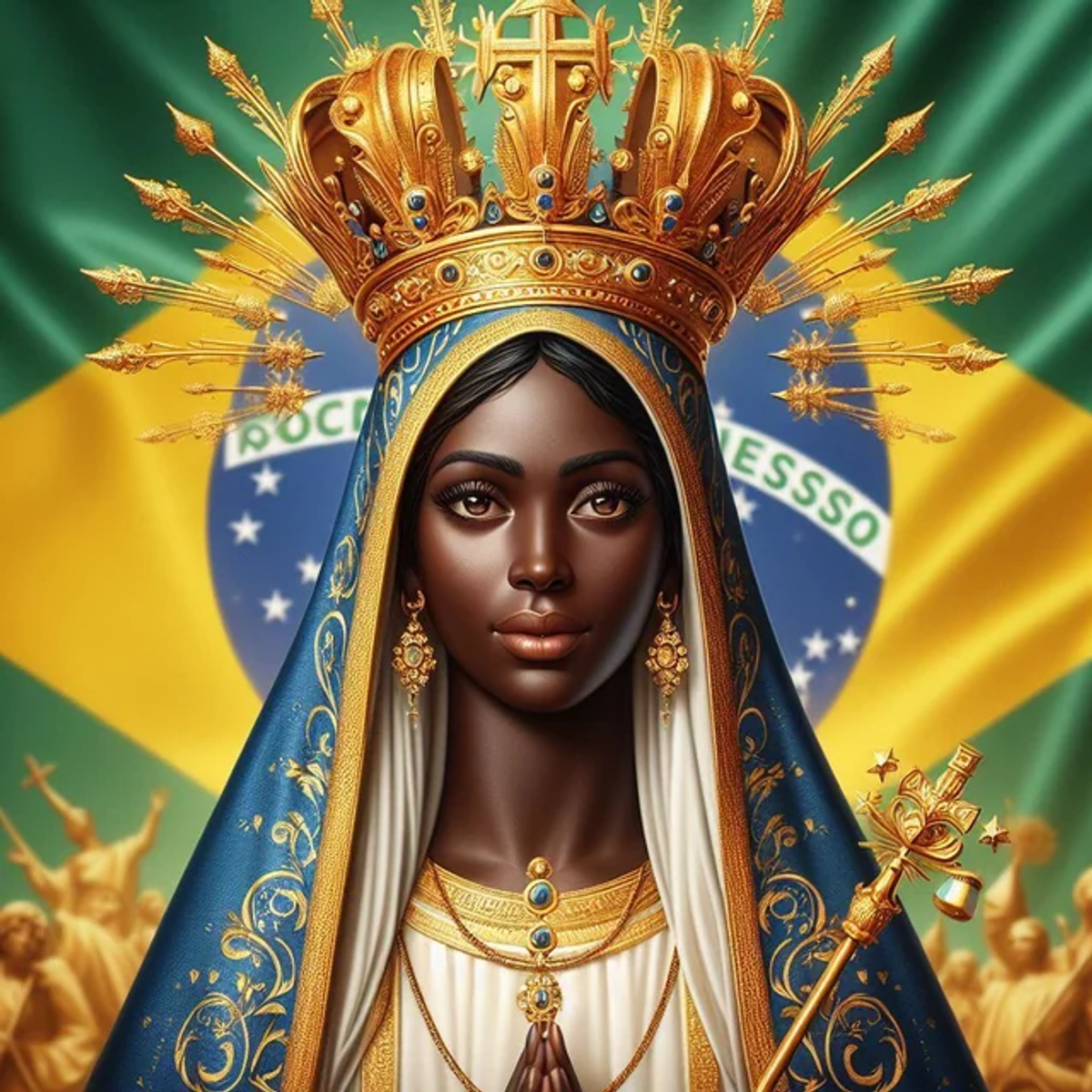Legend has it that in October 1717, after a day’s fishing without any luck, fishermen cast their nets into the Paraiba River and pulled up a small brown statue of the Virgin Mary.
Then they cast their nets again and this time they came up full of fish. This was the first miracle attributed to the statue
The area where the miracle happened grew into a city called Aparecida (meaning “she who has appeared”) and a church was built to house the statue which has now become the destination of many pilgrimages.
The statue is made of clay and is about 40cm in height. The statue was a lighter shade of brown when found, but is now much darker due to years of exposure to candles and lamps around the altar.
Because of its colour and because the miracle happened to a young slave boy, devotion to the statue grew rapidly, particularly among Afro-Brazilians.
Many churches in Brazil have been dedicated to her, the most significant ones are the Brasília’s cathedral and the National Basilica. The latter is the world’s second-largest basilica and is able to hold over 45,000 worshippers.
Our Lady of Aparecida was declared the patron saint of Brazil by Pope Pius XI in 1929. The feast day of Our Lady of Aparecida has been a National Holiday in Brazil since 1980.
